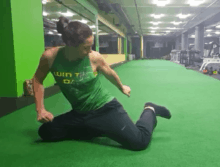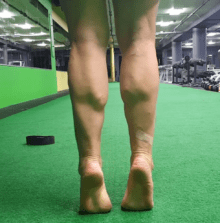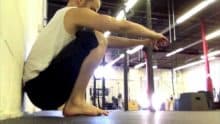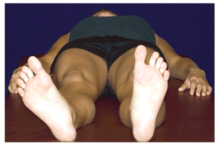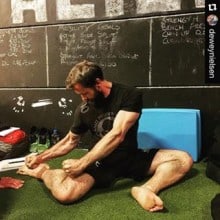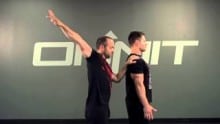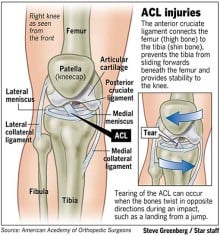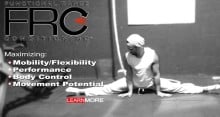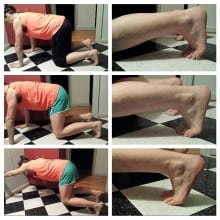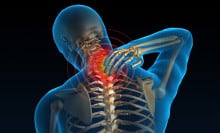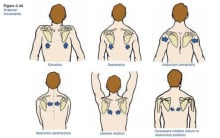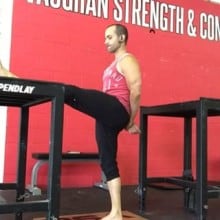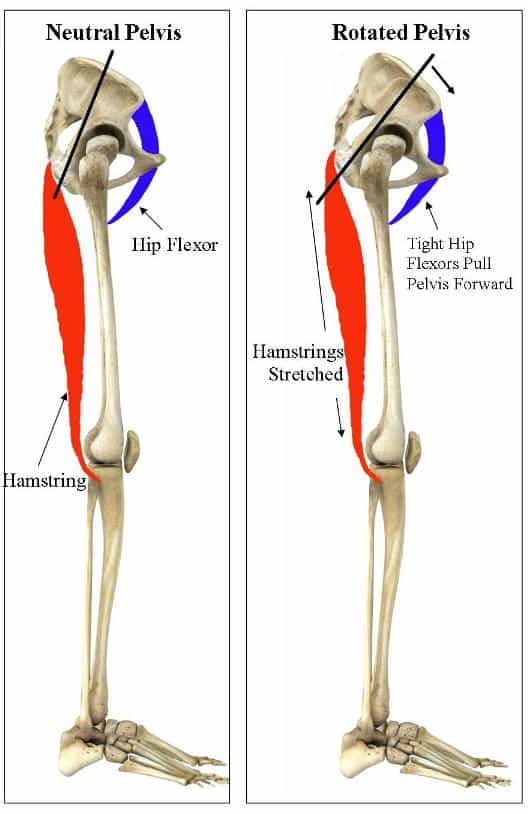Body control is all the rage. A popular want is increasing active range of motion. People want to get there so they can do stuff there. Functional Range Conditioning uses slow, controlled movement to examine individual joints, build capacity in… Read more ›
As practioners and coaches, teachers and students, we are constantly seeking out information to make us better at what we are trying to do. We stalk and search. If only we could see and know, then we could do. Despite… Read more ›
Pelvic motion and knee flexion influence hip rotation. Structures above and below a joint have a direct impact on the way it functions. For the hip, its surrounding articulations are the knee and the pelvis. Stiffness or motion in… Read more ›
The tip toes position is an assessment of toes, feet, and ankle control. Balance comes from joint stacking. The push off when we walk comes from a high heel. A toe point or push is required with reaching. Loaded plantar… Read more ›
feature photo credit: Dr. Andreo Spina Tibial rotation is necessary for keeping the knees in line with the ankles during a deep squat. It also greatly influences walking gait and joints of the knee, hip, ankle, and foot. Issue… Read more ›
featured photo credit: morphopedics.wikidot.com Stiff hips cause pain, injury, and lackluster performance. A freely rotating hip is likely to flex, extend, abduct, and adduct with ease. Restrictions with any of these movements can often be traced back to restrictions in… Read more ›
featured photo credit: @movnat instagram (Carlos Condit) The ground is a safe, secure place. It is not something to be avoided or stepped lightly onto. It can easily absorb our falls and placements and pressures. If we become afraid… Read more ›
For a very long time, my ability to do work was my defining feature. I needed to get stuff done to prove myself capable and worthwhile. When I was younger my Mom made us chores lists. She wrote them on… Read more ›
The one flaw in the Functional Range Conditioning system is its heavy use of acronyms. It has created a culture of separation, utilizing a language only understood within the context of the FRC group. Starting with CARs and developing into the… Read more ›
As examined in my previous post, joint function defines what kind of movements you are prepared to perform. Articular independence must come before articular interdependence. The ability to isolate a particular joint leads to more control, increased awareness, and lessening… Read more ›
The popular — and still conceptually relevant — joint-by-joint approach championed a decade ago lent logic to the idea that a problem that revealed itself in one area may be caused by dysfunction in another. There were stable joints, and there were… Read more ›
Controlled Articular Rotations (CARs) are the entrance point to Dr. Andreo Spina’s Functional Range Conditioning system: They are meant to: 1. assess joint health (particularly the function of the deep joint capsule) 2. maintain outer… Read more ›
I suffered a partial tear of my left ACL in 2003 during a rugby match. There isn’t a cool or gruesome backstory involved, just some open-field running with the ball. One cut and down I went. And stayed down. It… Read more ›
Functional Range Conditioning (FRC) is a system of creating, controlling, and expanding useable range of motion, defined as mobility. Unlike flexibility which is typically achieved passively, FRC uses tension and isometrics to minimize neurological safeguards that inhibit mobility in the… Read more ›
If you’re stuck in a movement plateau, changing the direction in which you impart force into a joint will often translate into greater mobility. The body reacts in function what is demanded of it by stress. Andreo Spina describes this… Read more ›
Like so many explorations, I have a personal connection with neck issues. I got crunched once quite solidly in a rugby ruck and felt a terrifying lightening bolt go through my body. My neck hasn’t been the same since. Then,… Read more ›
The shoulder blades are an enigma to the joint-by-joint theory. They act as a mobile-stabilizer to everything connected to the thoracic cavity. The only comparable area is the pelvis, which connects the hips to the lower canister of the torso.… Read more ›
Systemized by functional range conditioning (FRC), lift-offs are an ingenious way to focus on stability to achieve gains in mobility. Lift-offs are essentially lever tighteners. You place yourself in a supported end-range position, ‘screw-in’ the limb connection to the torso,… Read more ›
In part one of this series, we tried to resolve hamstring tightness by adjusting the pelvis and degree of flexion in the hips. The goal was to get the leg straight with varying closeness of the thigh to the chest. This… Read more ›






